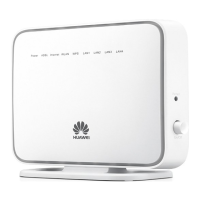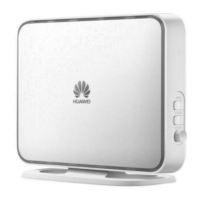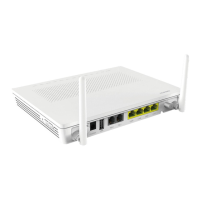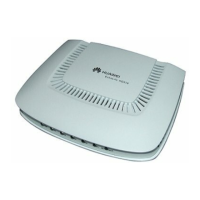5.5.1 Modifying Clock Synchronization Parameters
This chapter describes how to configure clock synchronization parameters of the ePico3801.
The clock synchronization ensures high clock precision so that the ePico3801 can work properly.
5.5.2 Modifying Transmission Parameters
This chapter describes how to modify transmission parameters. Generally, the transmission
parameters need not be modified after being set. Modifying transmission parameters may affect
the network connection. In addition, some transmission parameters being modified can take
effect only after the ePico3801 is restarted.
5.5.3 Modifying the VLAN Attributes
This chapter describes how to configure the VLAN attributes according to the service type.
5.5.1 Modifying Clock Synchronization Parameters
This chapter describes how to configure clock synchronization parameters of the ePico3801.
The clock synchronization ensures high clock precision so that the ePico3801 can work properly.
Prerequisite
l The parameters of the ePico zone have been set successfully.
l You have logged in to the AP Manager (APM). The login account belongs to the
Administrator or Operators group.
Context
l The ePico3801 supports the following clock synchronization modes:
– Clock synchronization over the Um interface: Under the coverage of the macro cell, the
AP uses the main SCH to perform timeslot synchronization and then synchronizes the
clock over the Um interface. The AP integrated with the GSM receiver supports two
clock synchronization modes: 3G clock synchronization over the Um interface and 2G
clock synchronization over the Um interface (preferred). 3G clock synchronization over
the Um interface synchronizes clock from the CPICH with the surrounding 3G macro
base stations. This mode implements the clock synchronization within a short period,
but the ongoing services are disrupted. 2G clock synchronization over the Um interface
synchronizes the clock output from the GSM receiver. This mode implements the clock
synchronization within a short period and the ongoing services are not disrupted. Note
that the neighboring cell information must be configured for the clock synchronization
over the Um interface.
– IP clock synchronization: If the AP is not in the coverage area of the macro cell or the
AP is providing services, the IP clock synchronization mode is used. When the AP
synchronizes the clock for the first time after it is switched on, the clock synchronization
over the Um interface is started to ensure a fast clock synchronization. When the AP
enters the normal working state, the IP clock synchronization is used to ensure the
processing of the ongoing services provided by the AP.
l Clock status:
– Free-run: If the clock synchronization is not being performed, for example, after the
clock synchronization is successful or the clock synchronization fails due to the timer
expiration, the clock is in free-run state.
5 Reconfiguring the ePico3801
ePico3801
User Guide
5-10 Huawei Proprietary and Confidential
Copyright © Huawei Technologies Co., Ltd.
Issue 01 (2009–09–23)
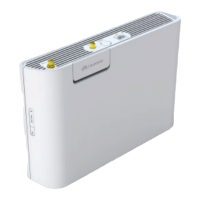
